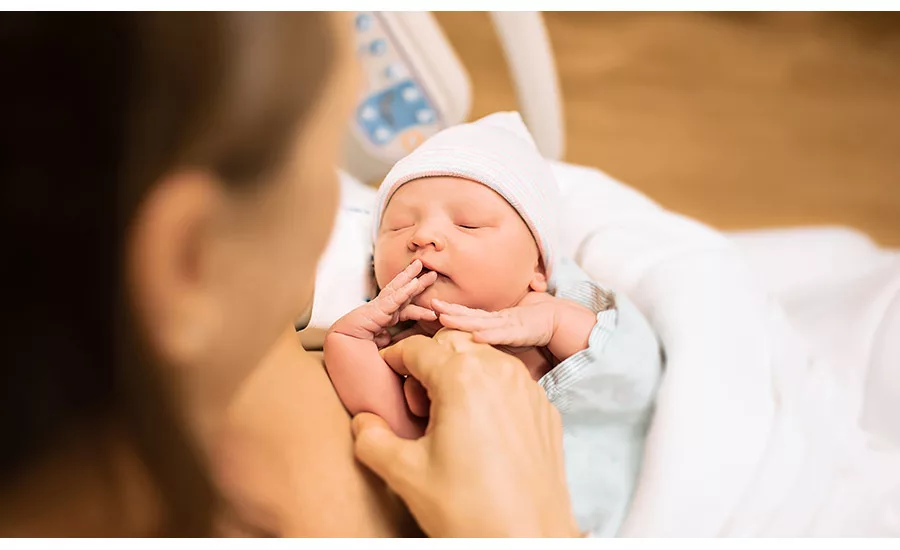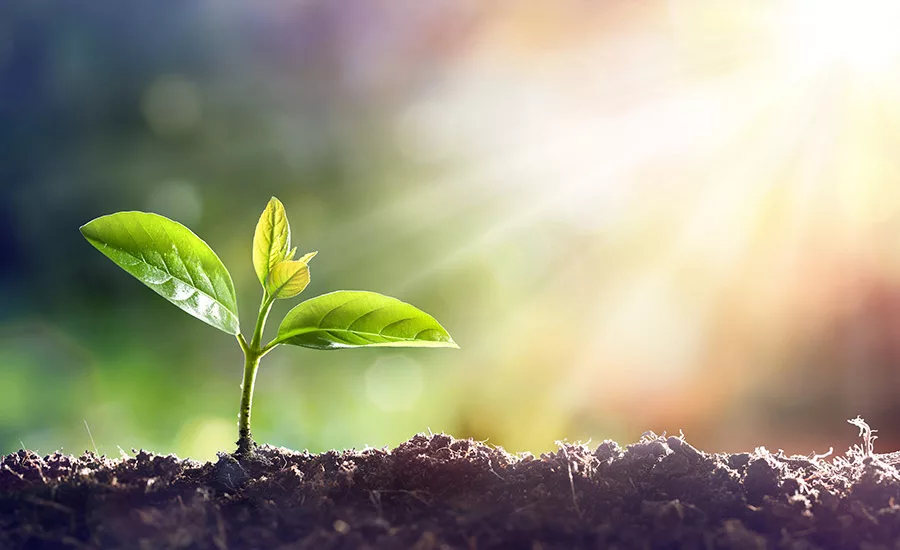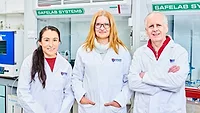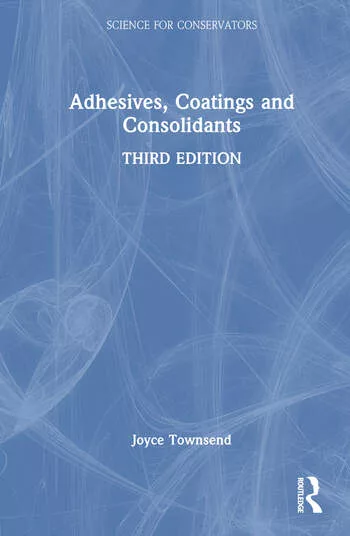Researchers at UC Berkeley Develop Recyclable Adhesives
New recyclable adhesives can be easily adapted for medical, consumer, and industrial applications. Uses include surgical superglue that could be a game-changer for fetal surgeries.

BlackJack3D / E+ / Getty Images Plus.

kieferpix / iStock / Getty Images Plus

Mariya Borisova / iStock / Getty Images Plus

RomoloTavani / iStock / Getty Images Plus
Polymers derived from alpha-lipoic acid (αLA), a small molecule that aids in cell metabolism, have the potential to provide versatile and environmentally friendly adhesives, but their instability has long been a barrier to their use in practical settings. Now, engineers at UC Berkeley have discovered a new chemical strategy that overcomes this impediment, opening the door to high-performance, recyclable adhesives for a wide variety of applications.
As published in the journal Science, researchers have created a new family of stabilized αLA polymer adhesives by slightly altering the chemical composition of their monomers, the small molecules that make up polymers. Using this "modular monomer system," they tailored the properties of the polymers to create adhesives for medical, consumer, and industrial applications, including a surgical superglue that could significantly advance the field of fetal surgery.
"Once we discovered a chemical approach to this stabilization problem, we had a polymer on our hands that had a multitude of potential uses," said Phillip Messersmith, principal investigator of the study and a professor of bioengineering and of materials science and engineering. "Most commercially available polymer adhesives are tailored for specific, sometimes narrow uses. But these αLA polymers have shown that they translate well across a range of applications and may be the start of a new industry paradigm, one built around multipurpose adhesives."
According to Subhajit Pal, first author of the study and a postdoctoral researcher in the Department of Bioengineering, this level of versatility is unique for an adhesive. "I don’t know of any other adhesive system or family where you can mix and match a couple of monomers together in different ratios and get this range of adhesion systems," he said. "In addition, these novel αLA polymer adhesives often matched or surpassed the performance of commercially available products."
The new αLA polymers also provide an environmentally friendly adhesive option, in contrast to most consumer and industrial adhesives on the market, which tend to be petroleum-based.
"These αLA polymer adhesives can be sustainably sourced — as αLA can be bio-manufactured," said Pal. "Also, they can be recycled in a closed loop system or left to degrade to non-toxic substances."
Upon stabilizing the αLA polymer, the researchers made small modifications to the underlying monomer composition to optimize the polymers for medical, consumer, and industrial applications. The result was three different products: a medical adhesive formulated to act like a surgical superglue; a pressure-sensitive adhesive, like those used for sticky notes, labels and tape; and an epoxy-like structural adhesive.
Surgical Superglue
After developing the αLA polymer surgical superglue, the researchers first tested it in benchtop experiments to see how it would perform in comparison to existing medical adhesives.
"We found the mechanical and biological performance of our αLA polymer adhesive to be superior to an existing surgical sealant and a medical-grade cyanoacrylate superglue," said Messersmith. "It provides a high-strength yet flexible adhesive that bonds when it comes into contact with wet tissue — and degrades in a timely manner, making it safe for use in the human body."
Next, the researchers investigated the new adhesive for use in fetal surgery. During fetal surgery, doctors perform surgical repairs of congenital fetal defects before birth, accessing the womb through an incision or a small hole through the fragile amniotic sac. Following the procedure, sometimes the sac ruptures, leaks fluid or gets infected, increasing the risk of pre-term delivery and fetal death. Past attempts to seal fetal membranes have focused on applying the adhesive at the conclusion of the procedure, with limited success.
Using their surgical superglue, the researchers tried a new "presealing" approach that involves placing the αLA polymer adhesive on the tissue before puncturing with a needle — and is believed to be the first procedure of its kind in a preclinical study. The surgical superglue successfully sealed murine (mouse) amniotic sac ruptures, increasing fetal survival rate from 0% to 100%.
The researchers attribute these results to the added mechanical support provided by the adhesive near the puncture site and to self-healing properties of the polymer adhesive that allow for spontaneous closure of the hole made by the needle. The adhesive also demonstrated resistance to E. coli, which could help guard against bacterial infections.
This new adhesive has the potential to prevent some of the most common and serious complications associated with these delicate fetal surgeries and, according to Messersmith, may prove to be a breakthrough in this emerging field.
"This small animal model is just a start," he said. "We hope to pursue this line of study in larger animals to further test the efficacy of this type of surgical superglue."
Advancing Adhesive Performance
The researchers also applied their approach to developing other types of adhesives and found significant improvements in performance. After testing their pressure-sensitive adhesive, they found that it functioned well in both dry and wet conditions and even surpassed the performance of conventional pressure-sensitive adhesives.
In one test, an αLA polymer adhesive film bonded to stainless steel took more than seven days to fail under a static load of 1 kg, whereas a conventional polymer made of butyl acrylate and acrylic acid failed in less than two minutes under the same conditions.
Next, the researchers created an epoxy-like structural adhesive by adding calcium lipoate, a salt of αLA, giving the normally soft, elastic αLA polymers an epoxy-like rigidity and strength. The resultant structural adhesive scored well in performance tests and had shorter curing times and better adhesion performance in the presence of water when compared to commercially available epoxy.
"We showed that by tweaking the formulation of our polymer adhesive, we can get a structural adhesive that is just as strong as epoxy," said Messersmith. "It's basically the same chemistry as the medical adhesive and the pressure-sensitive adhesive, just slightly altered by the addition of calcium lipoate."
A Sustainable Solution
Stabilized αLA polymer pressure-sensitive adhesives and structural adhesives also offer circular economy advantages. They can be recycled in what is known as a closed-loop system. Following a simple, two-step process in water, the polymer is disassembled to its monomers, which are then used to build a new polymer. And if the adhesive is discarded instead of being recycled, it will safely degrade in the environment.
According to Pal, this is an important consideration given the growing concern over the environmental impact of microplastics and other non-biodegradable materials.
"Worldwide production of adhesives was estimated to be 20 million metric tons in 2019. Among the largest categories are pressure-sensitive and structural adhesives, many of which are currently petroleum-derived and nonrecyclable, and end up in landfills or incinerators," he said. "This new family of recyclable αLA polymer adhesives, with its renewable source, could help bring us closer to achieving a more sustainable and circular economy."
Co-authors of this study include Jisoo Shin, postdoctoral researcher; Kelsey DeFrates, graduate researcher; Mustafa Arslan, visiting scholar; Katelyn Dale, undergraduate researcher; and Dominic Ramirez, undergraduate researcher, all from the Department of Bioengineering; and Hannah Chen, undergraduate researcher from the Department of Materials Science and Engineering.
Article published courtesy of UC Berkeley.
Looking for a reprint of this article?
From high-res PDFs to custom plaques, order your copy today!






